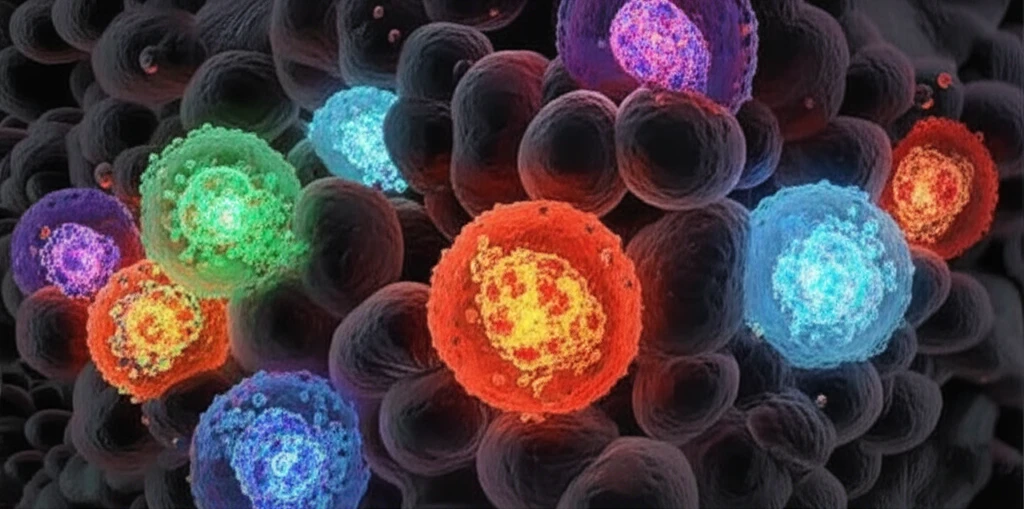
Nanoceria: The Tiny Particle with Big Potential in Cancer Treatment
"Exploring the groundbreaking research on nanoceria and its role in revolutionizing cancer therapy."
Cancer remains one of humanity's most formidable adversaries, with conventional treatments often presenting a double-edged sword. While methods like chemotherapy and radiation therapy can be effective, they frequently harm healthy cells alongside cancerous ones, leading to debilitating side effects.
Enter nanotechnology, a field that holds immense promise for revolutionizing medicine. Within this realm, cerium oxide nanoparticles, also known as nanoceria, have garnered significant attention for their unique properties and potential in cancer treatment. These tiny particles offer a targeted approach, potentially minimizing harm to healthy tissues while effectively combating cancer cells.
This article delves into the exciting world of nanoceria, exploring its potential as a game-changer in cancer therapy. We'll examine how it works, its advantages over traditional methods, and the ongoing research aimed at unlocking its full potential.
Nanoceria: A Targeted Approach to Cancer Treatment

Nanoceria distinguishes itself through its catalytic properties. Unlike conventional treatments that indiscriminately attack all rapidly dividing cells, nanoceria exhibits a remarkable ability to selectively target cancer cells. This selectivity stems from its interaction with the acidic environment characteristic of cancerous cells.
- Selective Targeting: Nanoceria preferentially interacts with the acidic environment of cancer cells, increasing oxidative stress and triggering apoptosis (programmed cell death) in those cells.
- Healthy Cell Protection: Because of the way it interacts with the cells, surrounding healthy tissues remain largely unharmed, minimizing the adverse side effects associated with traditional cancer treatments.
- ROS Scavenging: Nanoceria can switch between oxidation states, allowing it to interact with and neutralize harmful reactive oxygen species (ROS) that contribute to disease.
The Future of Nanoceria in Cancer Treatment
Nanoceria holds incredible promise, but like any emerging technology, it faces challenges. A key area of focus is improving its stability and ensuring it remains effective within the body's complex environment. Researchers are exploring ways to functionalize nanoceria, essentially adding molecular handles that enhance its targeting ability and improve its interaction with cancer cells.
Scientists are also investigating the long-term fate of nanoceria within the body and working to minimize any potential toxicity. While current evidence suggests nanoceria is relatively safe, further research is crucial to ensure its long-term biocompatibility.
Despite these challenges, nanoceria represents a significant step forward in the fight against cancer. Its targeted approach, potential for combination therapies, and ability to protect healthy cells offer a new horizon in cancer treatment, one where therapies are more effective and less harmful.
